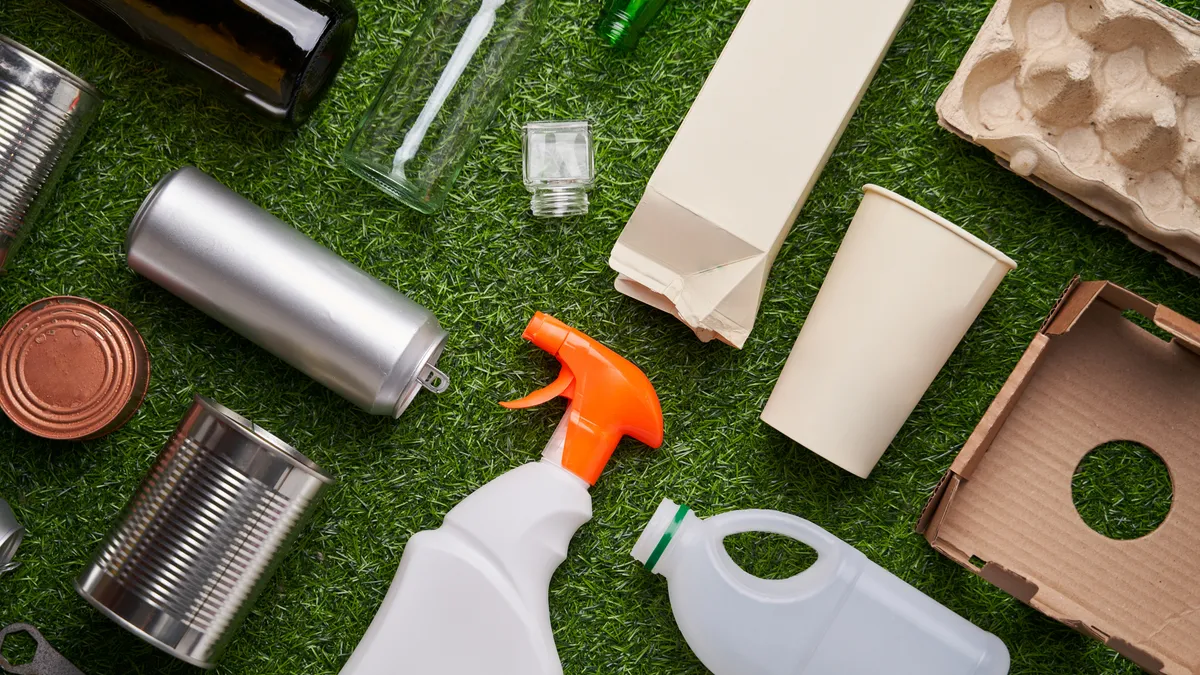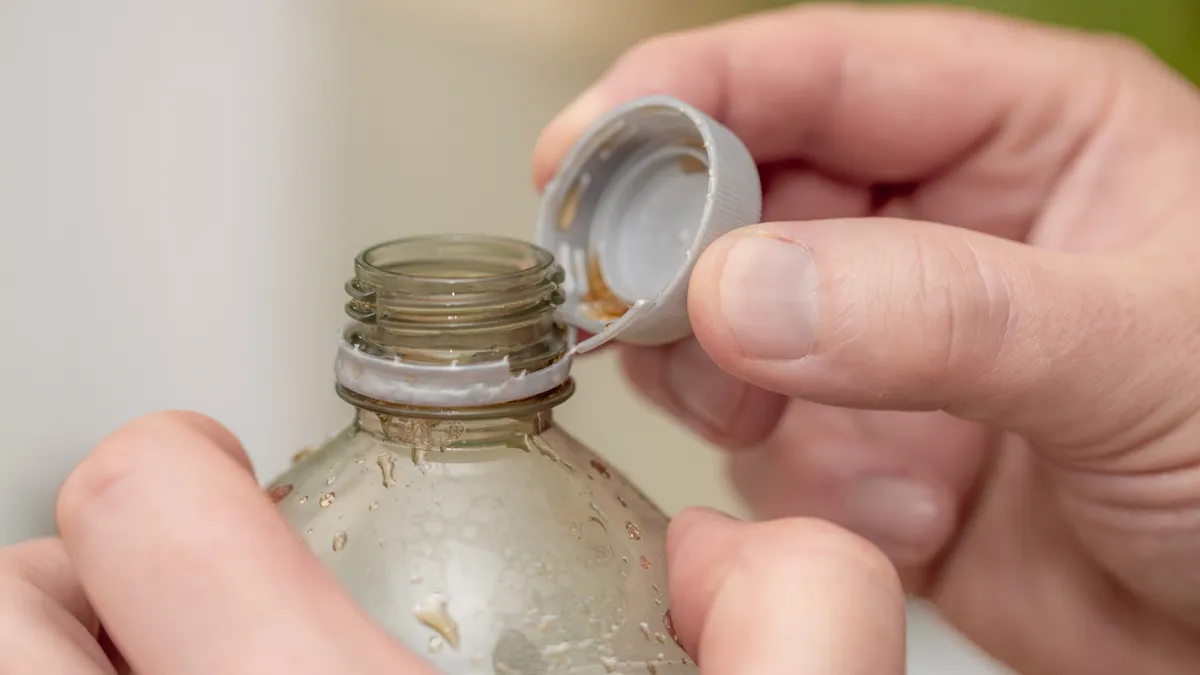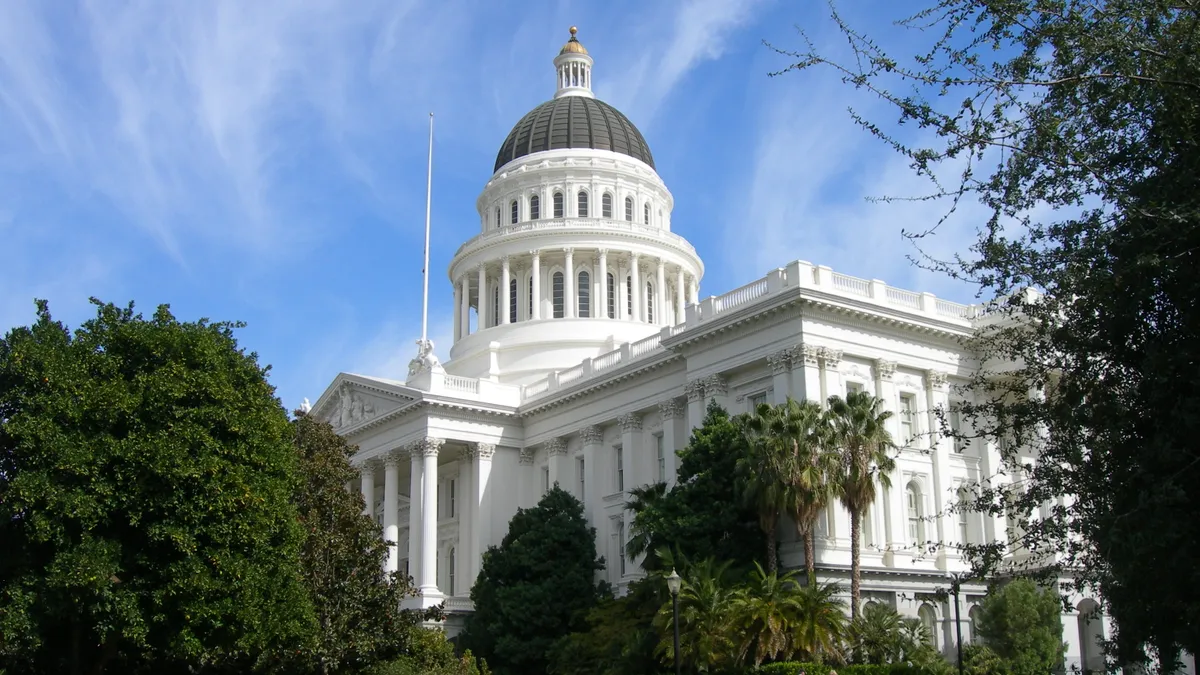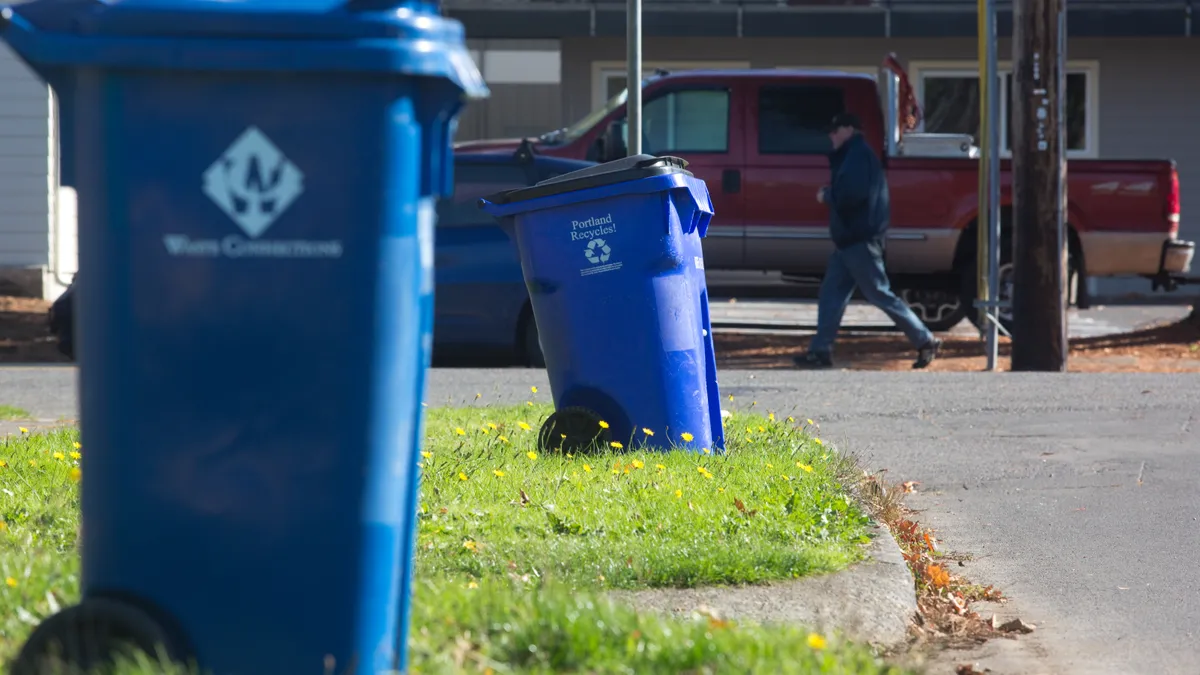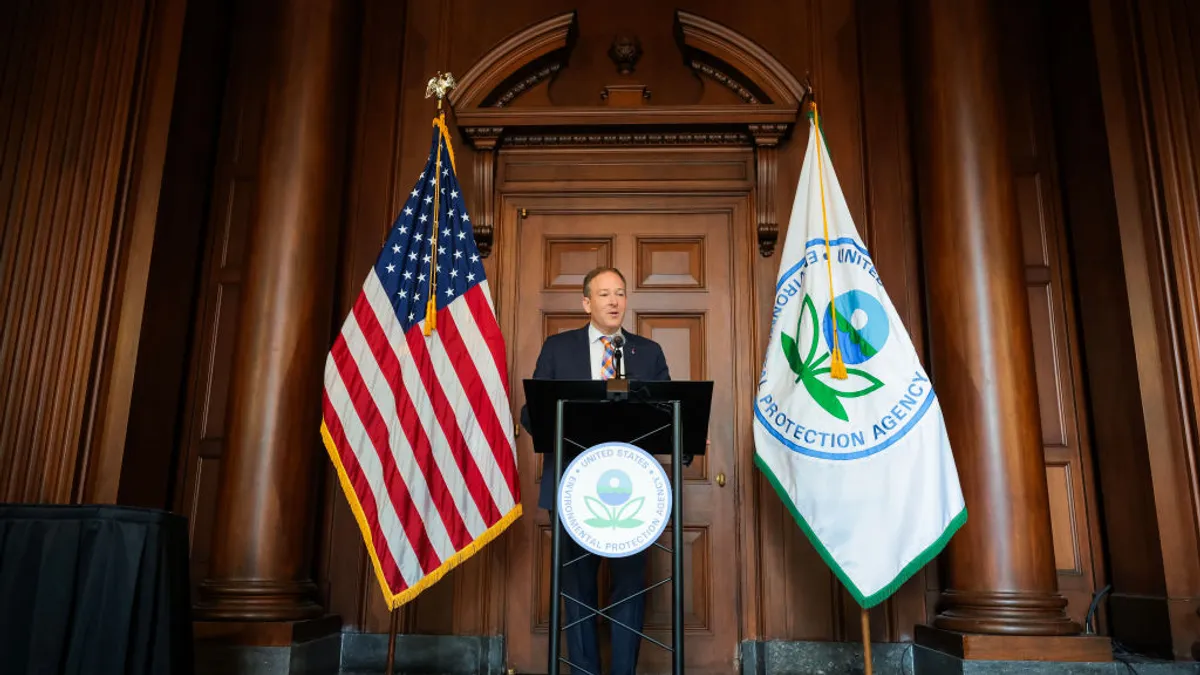Two years ago, extended producer responsibility for packaging was still an emerging concept in the United States. With at least five states now working toward implementing laws, a lot has changed.
“When I go into a room and ask for show of hands, who has heard of EPR, almost everybody at this point has,” said Dan Felton, executive director of Ameripen, during this week’s Packaging Recycling Summit in Anaheim, California, where EPR discussions dominated educational sessions and networking conversations.
With states in the throes of developing their EPR plans — and legislation teed up for discussion in several other statehouses — event attendees were hungry to learn more about what many said will be a game changer for recycling and corporate sustainability in the United States.
Felton called the rate of change “quite remarkable” and said attendees who weren’t familiar with the issue “better get up to speed pretty quick.”
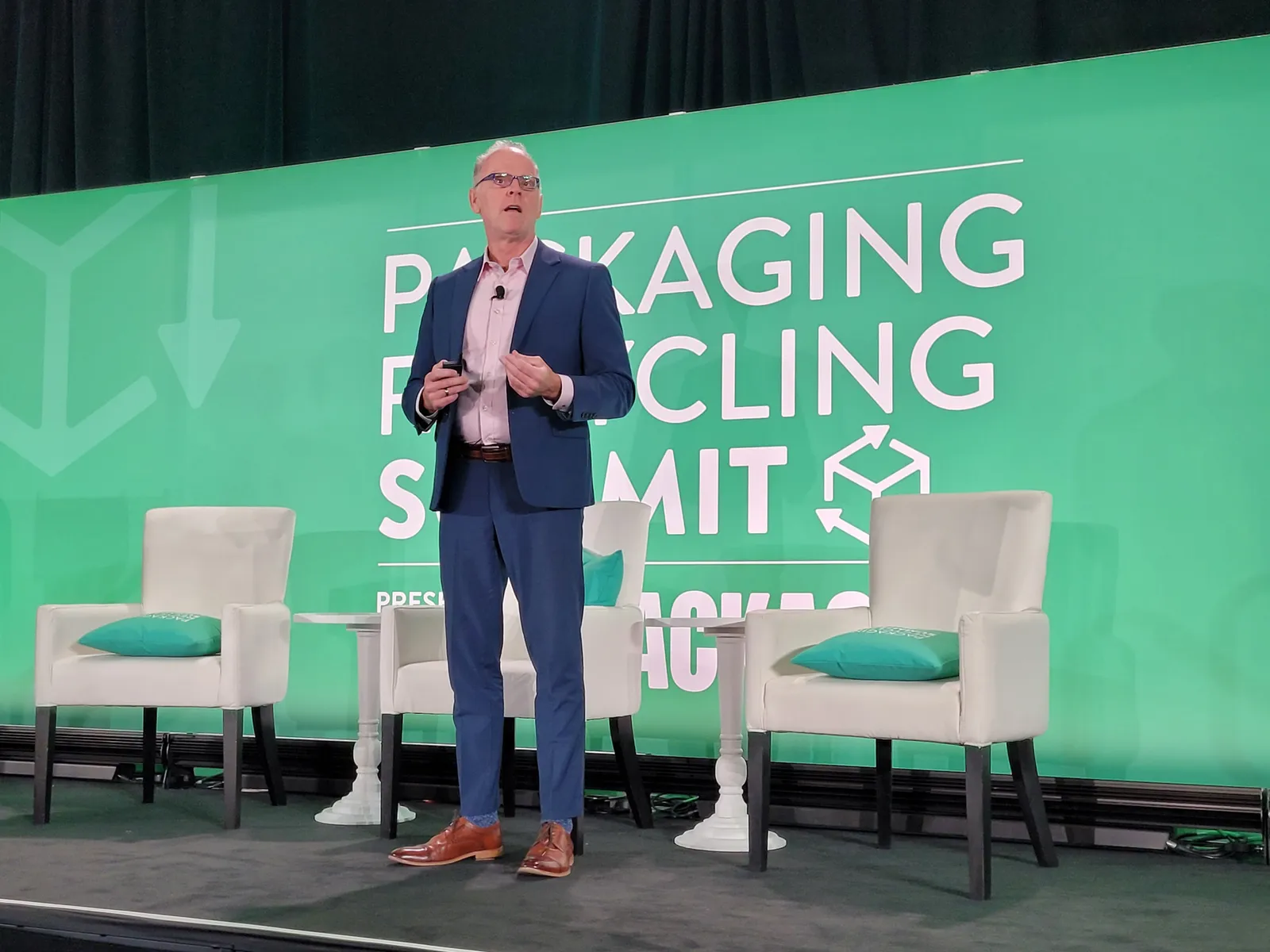
Impending regulations are forcing brands to evolve, sometimes in unexpected ways, speakers said. For one, brands have to figure out how to accurately collect the required data to report into the system to remain in compliance.
That can be “way tricky,” especially the more products a brand sells, said Neil Menezes, packaging sustainability policy manager at General Mills and vice chair of Circular Action Alliance’s board of directors.
Brands will eventually have to assess how much and what type of packaging they have on the market. For instance, “we typically don’t track in weight of packaging, we track in pallets, cases, units,” he said. “To find a way of converting from that to a weight of different types of packaging is a complex exercise. We need, effectively, some sort of unit weight per component — and making sure we multiply that carefully to get the actual weights that we need to report to the jurisdiction.”
The underlying message from many speakers throughout the conference was that while there are some knowns, there seem to be more unknowns that need to be worked out prior to final EPR implementation. The lack of certainty creates confusion for many players along the supply chain about exactly what the future holds for brands, packaging suppliers and potential changes that must be made to operations and packaging. And the fact that each state is developing its own individual EPR system — with no national system in sight — only adds to the broad uncertainty.
Although the packaging suppliers technically don’t bear the burden of product responsibility in EPR schemes, they still have to support brands’ compliance and help collect data. “It has to be a two-way street,” said Phil Martinez, North American sustainability manager at MCC Label. “But that data question has to be where we start.”
Many speakers agreed that developing effective data collection systems and goals should lie at the heart of an EPR system.
“Another part of the system that isn't as ready, necessarily, that we're still trying to get more data on, is the entire supply chain that provides the packaging in the first place, or measures PCR content for different materials,” said Scott DeFife, president of the Glass Packaging Institute. “You need to be measuring where you can measure, and not just creating a lot of paperwork just to do some traceability, when you know that the answer is back in the plant that manufactured the material and used the recycled content in the first place.”
Harmonizing parties on all aspects of EPR — and in each EPR state — is proving to be a sticking point.
“Governments and stakeholders want it one way in one place, and they get it another way in another place, and nobody's willing to compromise. And so we end up with this patchwork,” said Reid Lifset, research scholar at Yale University.
Oregon is examining the use of life cycle assessments for ecomodulation, a system that influences fees on materials based on their environmental effects. But challenges remain with making this evaluation more holistic, according to Lifset, versus focusing on individual metrics like landfill diversion.
“LCAs are a very flawed methodology, but there aren't a lot of alternatives to telling us on a systematic basis what's going on environmentally. So it's kind of the best of a bad set of choices when it comes to environmental analysis,” he said.
When speakers at various sessions were asked which state has passed the superior packaging EPR legislation, Minnesota — just approved this year — was the most repeated answer. Speakers described it as a less extreme and more gradually implemented system that’s more flexible and allows for revisions along the way, rather than going all-in from the get-go. They also noted that this plan could result in fewer unintended consequences.
Mentions of the desire for a uniform national system cropped up both during the conference sessions and many networking events, but the outlook for that in the short term is not so rosy.
“There will be discussions at the federal level. I’m certain of that,” said Felton. “Is anything going to happen at the federal level anytime soon? I would argue not yet.”
Rather, Ameripen expects more states to adopt EPR for packaging at a rapid rate, projecting 19 states total by 2030. One thing that speakers appeared to agree on is that introducing these systems in the United States will not be a short or easy road.
“It is going to be a long, long marathon to figure out what works, what doesn't work, without sacrificing another component in our sustainability supply chain,” Menezes said.







